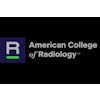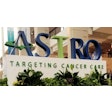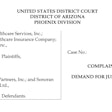
Diversity committees and audits to ensure LGBTQ participation can help lead to more inclusive and affirmative radiology departments, according to research published April 21 in Academic Radiology.
A team led by Dr. Jordan Perchik from the University of Alabama at Birmingham found that inclusive index scores gradually increased for departments after LGBTQ task forces were formed.
"Promoting an inclusive and affirming radiology department is an important step to providing culturally competent healthcare and mitigating health disparities," Perchik and colleagues wrote.
While advances have been made in identifying LGBTQ health disparities and promoting inclusive, affirmative environments for LGBTQ patients, the researchers wrote that radiology has struggled to advance diversity and inclusion within the field.
Studies suggest that one in six members of Generation Z identify as part of the LGBTQ community and are also more likely to be pronoun literate. About 35% reported knowing someone personally who uses they/them or neopronouns, compared with 25% of millennials, 16% of Generation X, and 12% of baby boomers, the researchers wrote.
Previous studies also suggest that mentorship, increased LGBTQ visibility, and promoting inclusive department policies increase resident diversity. But researchers wrote that no metric has been reported in evaluating a residency program's LGBTQ inclusivity.
Perchik and colleagues wanted to measure how a program's LGBTQ inclusion index developed by an interdepartmental committee improved inclusivity.
They identified five inclusion milestones related to department policy, department facilities, institutional culture, department culture, and community engagement. If a milestone was not at all met, it was given a score of 0, a score of 1 if it was partially met, and a score of 2 if it was completely met. The highest total score possible was 10, and the team calculated program scores for the 2018-2021 academic years.
The 2018 and 2019 scores included a subscore of 0 for department culture. The score increased after an LGBTQ inclusion task force was created by the diversity and inclusion committee after the 2019 academic year.
| LGBTQ inclusion index scores from 2018 to 2021 academic years | |
| 2018 | 4 |
| 2019 | 4 |
| 2020 | 7 |
| 2021 | 9 |
An LGBTQ inclusion audit also identified areas needing improvement. The committee drafted proposals to address these gaps, including a toolkit for residents undergoing gender-affirming healthcare, which led to a further score increase.
Perchik et al wrote that engaging in inclusion audits can be valuable for radiology residencies aiming to increase diversity and inclusion.
"An affirming workplace is an important, but multifaceted cornerstone to addressing the needs of LGBTQ residents," they added. "Even programs with active diversity and inclusion measures can benefit from an intentional review of their policies and procedures."




















